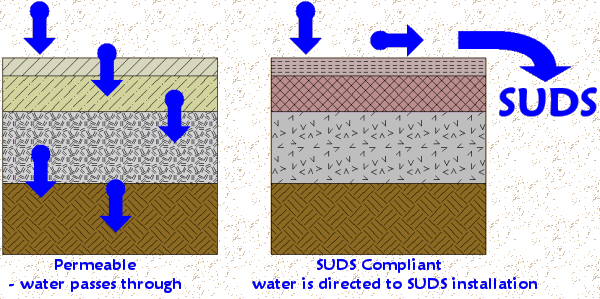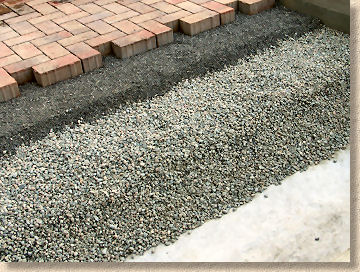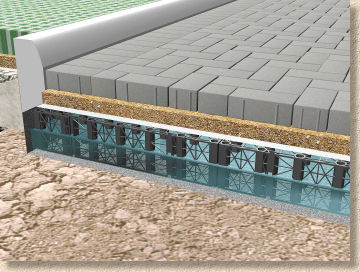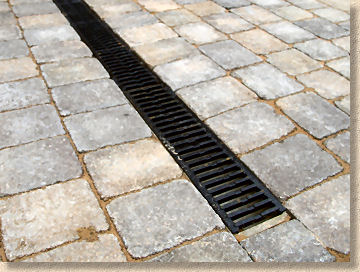Introduction:
There's an unfortunate tendency for contractors, specifiers, homeowners and even government to talk about "permeable pavements" when what they actually mean is "Suds-compliant pavements", which can be defined as any pavement from which surface water is sent to a suds installation from where it may have the opportunity to drain to ground or be temporarily stored rather than being directly channelled into the public sewer system or an open watercourse. There is a subtle difference: permeable pavements allow water to pass through the paving structure, whereas suds-friendly pavements simply direct surface water to a suds installation such as a soakaway , a swale, etc.

Attenuation
In some cases, most often due to local ground conditions, a suds installation may direct some or (more rarely) all of the collected water to the sewer system, but in a manner that reduces the impact on the sewer system, most often by attenuation .
Attenuation is simply a slowing down, a braking or delaying process whereby the collected water is released in a slow and steady manner rather than in one big gush. Say, for example, a storm dumps 50mm of rainwater onto a pavement in an hour. On a standard pavement, that 50mm would be sent immediately to the sewer system, where it meets up with the 50mm collected from the pavement next door and the 50mm from the car park outside the shops and the 50mm from the main road. Suddenly, the sewer has a massive amount of water struggling to find its way through a pipe of limited diameter, and it may be that not all of the water can pass through there and then. It starts to back up, waiting for a chance to get into and through the pipe system, and may even start to surcharge through access covers, gullies and the like.
In an attenuated suds installation, that 50mm of rain is directed to a 'holding tank'. This may be a permeable sub-base, a sub-base replacement unit, a soakaway or even a buried tank. That 'holding tank' then releases the water into the ground and/or the sewer system at a much slower rate, say 10mm per hour, reducing the load on the sewer system, and thereby reducing the risk of surcharging and flooding.


Either-or:
So: a permeable pavement is a suds-compliant pavement, but a suds-compliant pavement isn't necessarily a permeable pavement. Consider a macadam driveway on which surface water is directed towards a linear channel which, in turn, is piped to a soakaway beneath the garden. That is a suds-compliant pavement, but couldn't be classed as a permeable pavement.
Suds-compliant pavements always feature two key elements: how the water is collected and how it is then disposed. With concrete block permeable paving, the surface water is collected by passing through wider-than-usual joints between the individual block pavers and it is dispersed (usually) by means of a sub-pavement soakaway structure. Returning to the hypothetical suds-friendly macadam driveway, the surface water is collected by means of gradients on the macadam surface directing water into a collector channel. It is dispersed via a soakaway that may be some distance from the actual pavement surface.
In short: it is possible to create suds pavements using any type of paving. It is not always necessary to use permeable paving, although these surfaces do offer a simple and effective option.

A non-suds pavement would be any paved surface that delivered water directly into a conventional drain, a public sewer or an open watercourse. A patio that is drained towards a gully on the corner of the conservatory is probably not a suds pavement (unless that gully is connected to a soakaway), and a driveway that simply relies on endfall to direct water towards the public highway is not a suds pavement, because that water will eventually find its way into a road gully and from there into the sewer system.
